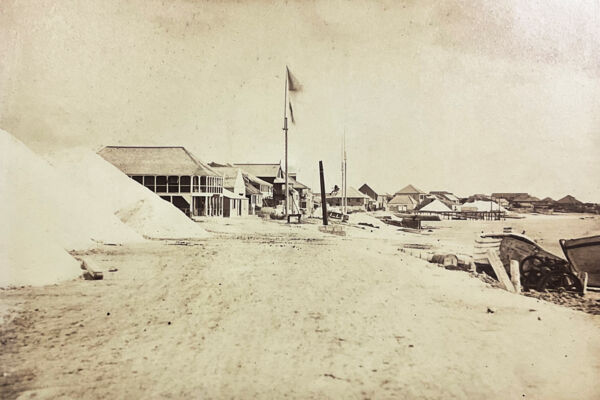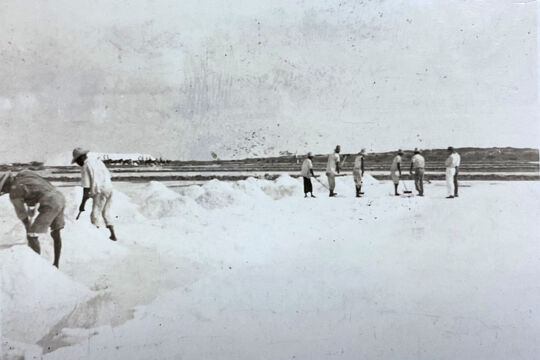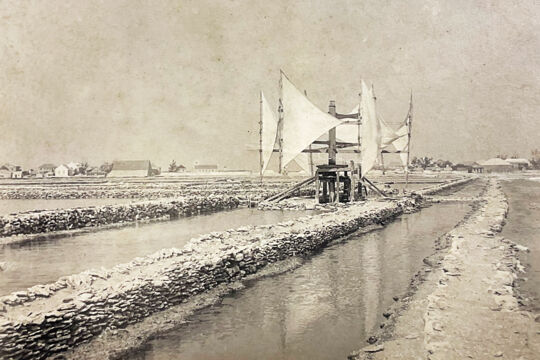Grand Turk Salt Salinas
Grand Turk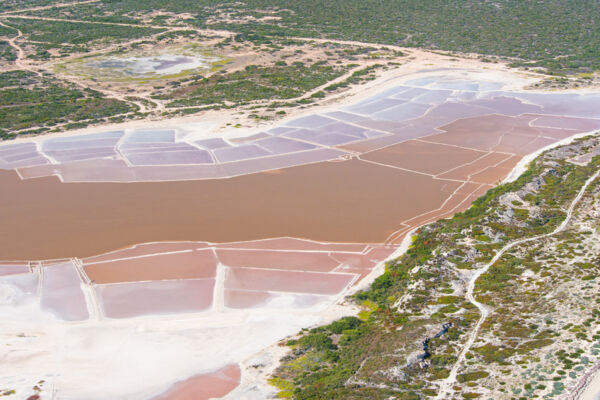
Along with South Caicos and Salt Cay, Grand Turk was one of three islands in the Turks and Caicos developed to produce salt. Although the exact dates are unknown, the development of the salinas for salt production began sometime in the early 1700s, when British colonials in Bermuda recognized the potential of the shallow ponds in the Turks and Caicos. Over the next two hundred years, the infrastructure and methods were gradually improved as salt continued to be exported to many destinations in North America and the Caribbean.
Inlet connections to the ocean were made to feed the salinas, with sluice gates to control water movement. To facilitate the rapid and efficient evaporation of the ocean water, the brine would be moved by windmill or human-powered pump to progressively smaller and higher salt content ponds separated by low walls until it crystallized. This system allowed for smaller final stages of ponds that were easier to keep free of unwanted water seepage, a consistent supply of salt, and also provided a bit of protection against major loss caused by wall failure.
At the height of production in the early 1900s, about 227 acres (92 hectares) of salina were being used on Grand Turk.
The Decline
The small scale of production is what ultimately doomed the sea salt industry in the country. Even considering all of the developable ponds in the Turks and Caicos, the expenses of building a deep water port and moving the output from the many small salinas to such a port simply couldn’t be financially viable. By the 1960s, salt exports from the country ceased.
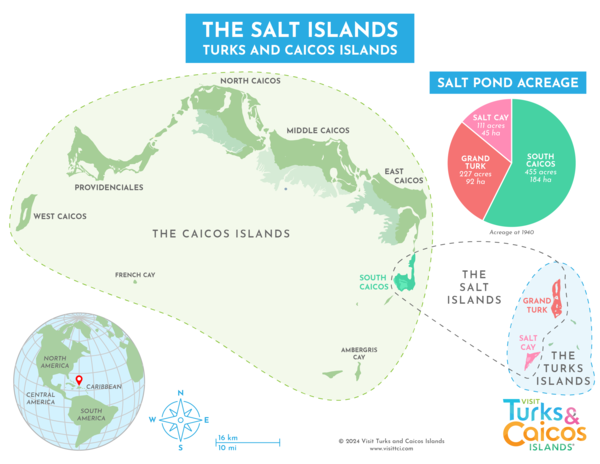
What Can Be Seen Today

Since the decline of the salt industry, Grand Turk has seen more development than Salt Cay and South Caicos, and consequently, less of the salt infrastructure still remains. Dividing walls and the ruins of some sluice gates make up most of what can be seen on the island. It’s easy to see much of this from the Cockburn Town area of Grand Turk.
Hawkes Nest Salina, located quite close to the Grand Turk Cruise Center, typically features the greatest amount of present salt crystals.
The Salt House used to have an interesting exhibit on this industry, however, the shop has since closed.
Birdwatching
The marine ponds of Grand Turk naturally attract many types of wading and coastal birds.
It varies a little by season, yet sightings include flamingos, reddish egrets, snowy egrets, cattle egrets, tricolored herons, great blue herons, yellow-crowned night herons, stilts, ducks, and sanderlings.
If the sightings aren’t great in the salinas, another good birdwatching location to try is the north-western side of North Creek.
Unlike the wildlife in the remote wetlands of the Caicos Islands, the birds in the Grand Turk ponds tend to be easy to approach due to their constant exposure to people, a definite consideration for nature photographers.

